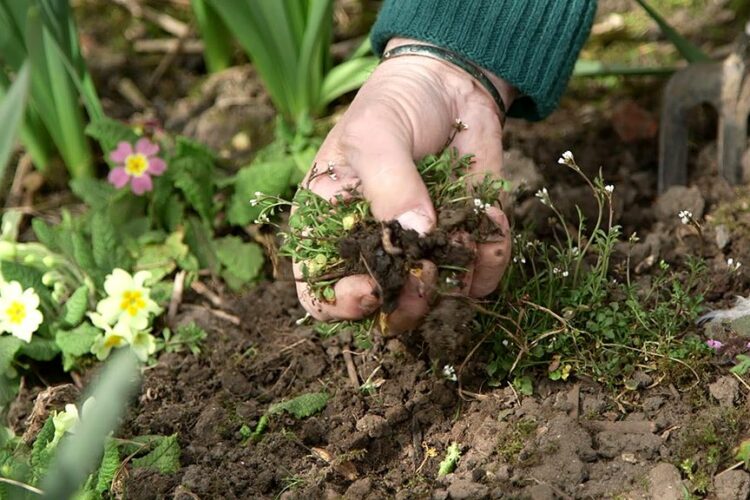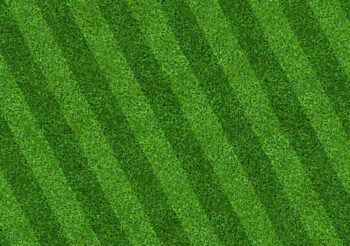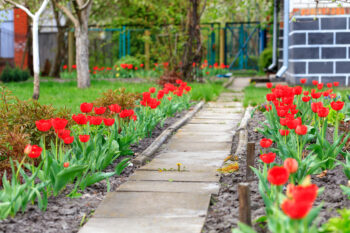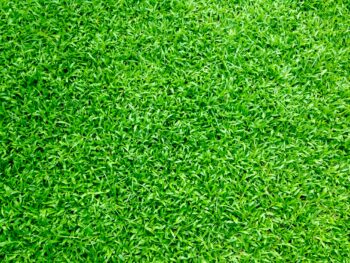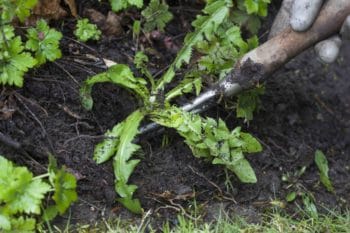 Weed growth doesn’t stop in the winter. Many of them germinate in the fall, grow in the winter, develop flowers and seeds in the spring, and then die off in the hotter months.
Weed growth doesn’t stop in the winter. Many of them germinate in the fall, grow in the winter, develop flowers and seeds in the spring, and then die off in the hotter months.
The seeds then start to germinate again in the next fall. It’s important to stop this cycle so winter weeds don’t take over your yard. Here are a few considerations:
- Pre-Emergent Herbicides
- Spot-Treatments, Including Targeted Sprays
- Weed and Feed
- Pulling Weeds Manually
- Look out for winter-hardy grassy weeds as well!
Using Pre-Emergents
If you can get a head start, using pre-emergent herbicides in the fall is one of the best ways to control winter weeds. It works by preventing them from ever sprouting by killing the weed seeds.
Soil temperatures need to be above 70 degrees for pre-emergents to work, so they cannot be used if temperatures have already dropped for the season.
Plan ahead for the next fall if you have already missed the window for the year.
Spot-Treatments
Broadleaf weeds like dandelions, chickweed and henbit are easy to spot-treat. They stay green against dormant grass so they can be identified and sprayed.
Most warm-season grasses like Bermuda and St. Augustine go dormant in winter, making it a good time to control weeds.
Herbicide won’t kill a lawn that is dormant, only the weeds. This is especially true of you use a spot-treatment weed killer that is formulated specifically to target broadleaf weeds.
Spraying Weeds
Weeds can be sprayed as long as the grass is dormant and temperatures are high enough. Look for options that can be sprayed on the whole yard but won’t harm the grass.
For best results, spray when temperatures are above 40-45 degrees. Check weather conditions and spray on dry days with low winds.
Weed and Feed
Winter weed and feed is a good option for areas with mild winters. It fertilizes your lawn and kills weeds at the same time.
For best results, apply it along with compost. This allows the nutrients to soak into the soil.
Winter weed and feed works well in damp winter conditions, as opposed to dry summer weed and feed. Using weed and feed designed specifically for winter time is a powerful tool for winter weed control.
Ryno Lawn Care happily offers lawn fertilization and weed control in multiple cities throughout the metroplex.
Pulling Weeds
Weeds can be pulled year-round, but may be easier to spot and identify in the winter. They can be pulled as long as the ground isn’t frozen.
This YouTube video shows some helpful hand-weeding techniques.
Dandelions and other broadleaf weeds are easy to see among the dormant grass of a winter yard. This is also true for grassy weeds that thrive and remain green in cooler temperatures.
Invasive Winter Grasses
Invasive winter grasses like rescuegrass and poa annua can cause brown spots in your summer lawn, so they should be treated beforehand in the winter. Combating grassy weeds is a bit more tricky, as spot treatments that target them do not differentiate between grassy weeds and healthy turf grass.
Looking for more helpful info as winter settles in? Check out our Winter Lawn Care Tips.
These grasses are green during the colder months so they are easier to spot against a landscape of yellowed dormant lawn grass. Fortunately, they are more susceptible to weed and grass killer than your dormant lawn, so very careful spot treating can be done more safely in the winter.
Conclusion
There are several options for winter weed control at your disposal. While winter lawns are less maintenance than spring and summer, some work is required. Getting a handle on them during the winter can help you have a weed-free lawn by spring.

